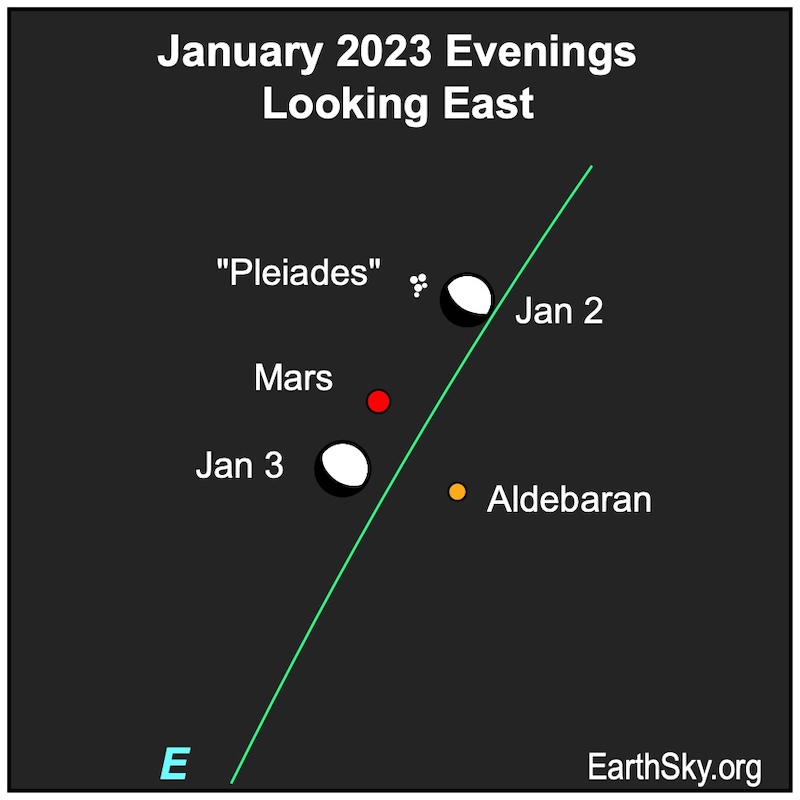
Moon near Mars and Pleiades
The waxing gibbous moon passes through the constellation Taurus the Bull in early January. On January 2, 2023, the moon is close to the pretty, glittering star cluster of the Pleiades. The Pleiades, or Seven Sisters, are especially lovely in binoculars. The next night, January 3, the moon pairs closely with Mars.
Mars reached its once-in-two-years opposition on December 8, 2022. That was when Earth flew more or less between the sun and Mars, in our smaller, faster orbit. Our motion placed Mars opposite the sun in our sky. And the distance between our two worlds was least then, for this two-year period. Plus, Mars was brightest in two years.
Now, as Earth speeds ahead of Mars in orbit, Mars’ brightness is beginning to dim. Early January is the brightest that Mars will be for all of 2023. So catch it now!
The view from around the globe
Depending on your location on Earth, the view changes slightly from your perspective and depending on when the sky is dark overhead. So, if you’re in the Southern Hemisphere, turn our maps upside down for a more accurate view. Or try Stellarium for a precise star chart from your location.
From the Southern Hemisphere, you’ll want to look toward your northern horizon to see the moon pass the Pleiades, Mars and Aldebaran. South America will see the moon by the Pleiades on January 2 and by Mars on January 3. Across the globe in the Eastern Hemisphere, Australians will see the moon between Pleiades and Mars on January 3.
For all of us … the brightly lit moon will wash out faint background stars. But you should still be able to make out the V-shaped Hyades star cluster that forms the Bull’s face nearby. Another reddish light lies there: the star Aldebaran, the Eye of the Bull.
Bottom line: All of us around the globe can spot the moon in the vicinity of Mars and the Pleiades star cluster on the evenings of January 2 and 3, 2023. The reddish star Aldebaran is also nearby.
For more great observing events in the coming weeks, visit EarthSky’s night sky guide











